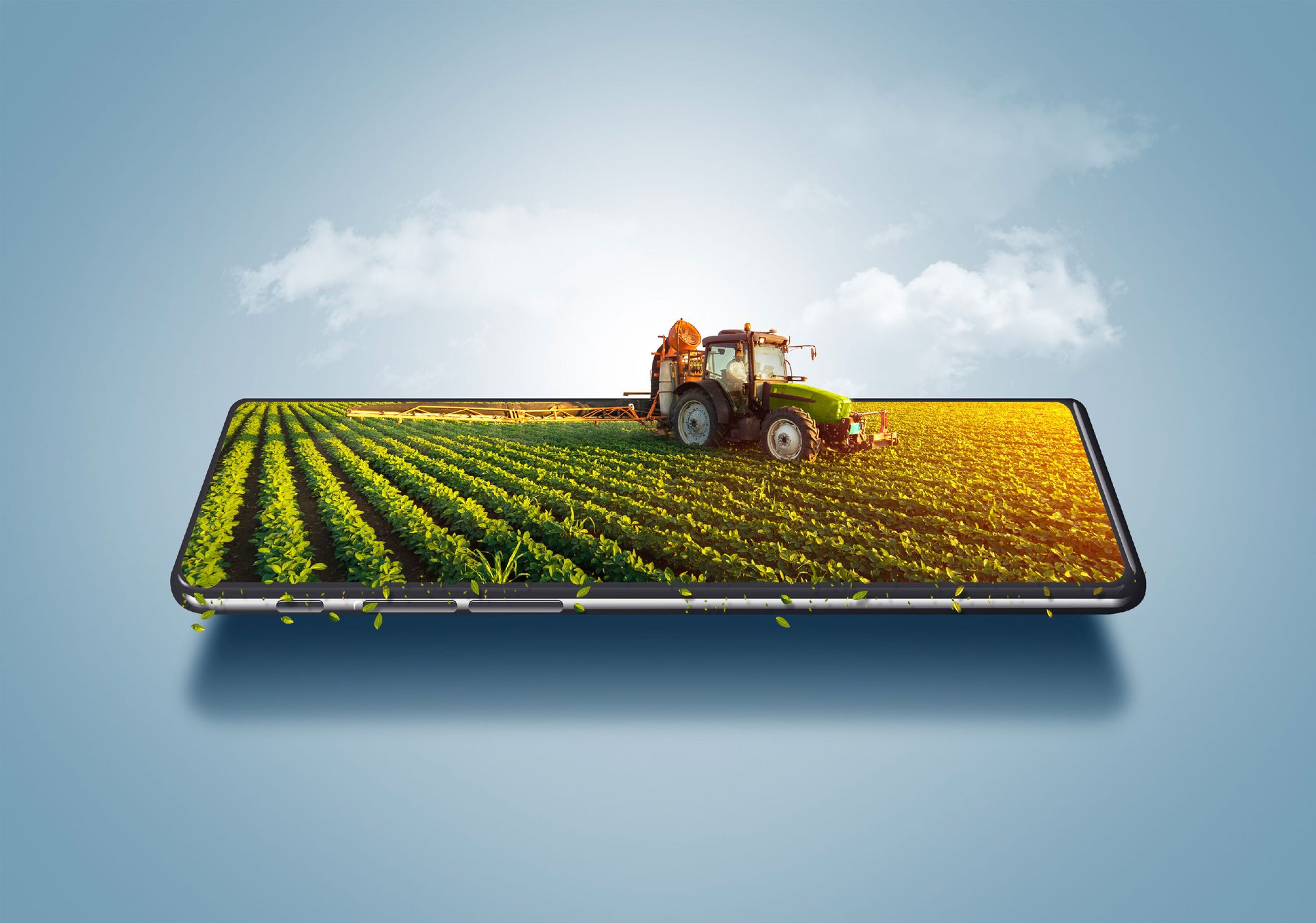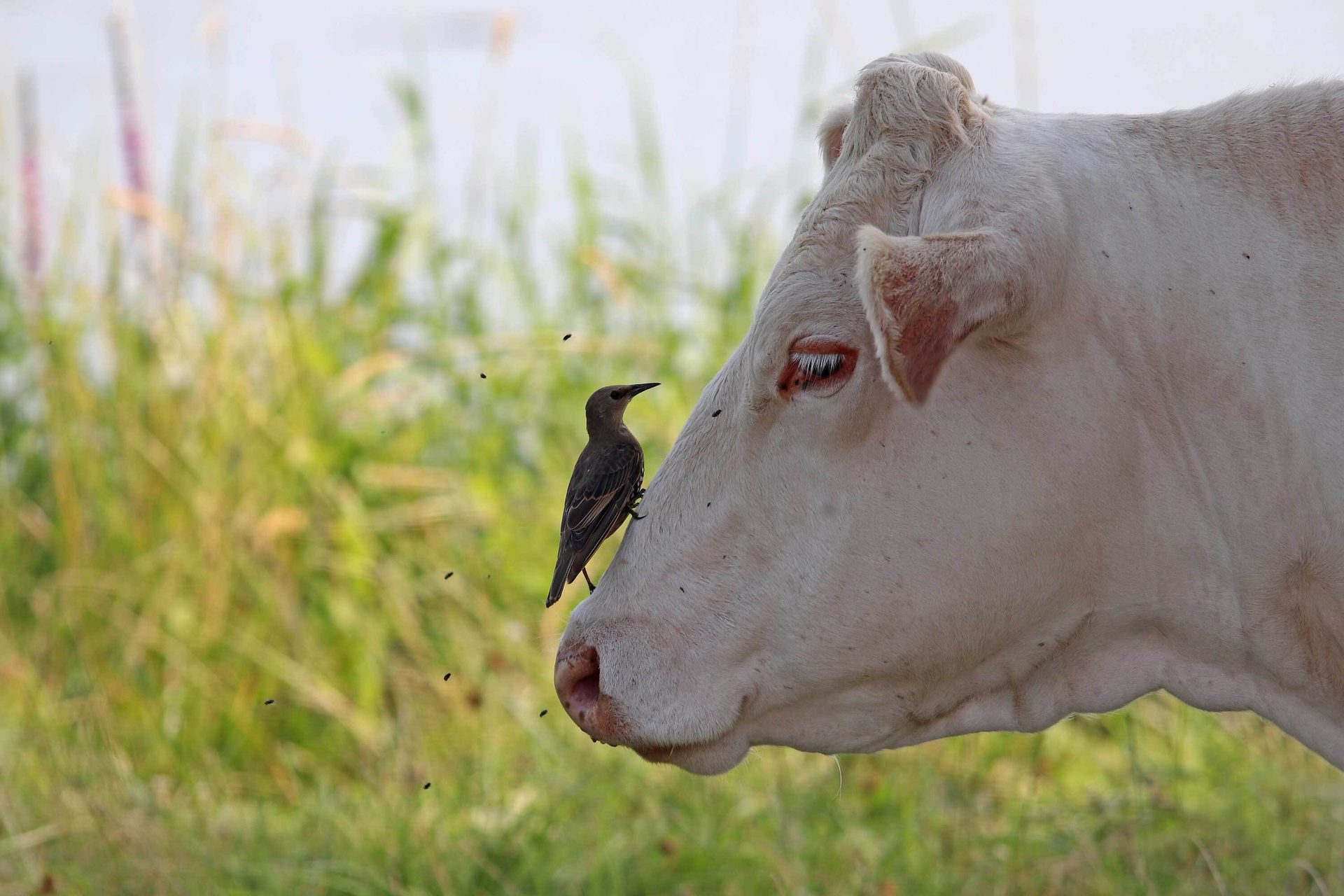ARTIFICIAL INTELLIGENCE
By Charita Chapman, M.S., Founder and CEO, Chapman Consultancy LLC and former Consumables Manager, Regulatory Intelligence, Safety, and Compliance, Amazon
Harnessing AI to Safeguard Food Safety in the Face of Climate Change
In the wake of escalating concerns over climate change and its profound impact on global food safety and security, innovative solutions are imperative

Image credit: waleed ahmed/iStock / Getty Images Plus via Getty Images
SCROLL DOWN
By 2050, there will be an estimated 10 billion people on earth that will require safe food and clean water.1 Access to nutritious food is recognized as a basic human right under the 1948 Universal Declaration of Human Rights written by the United Nations, forming a crucial part of food security. Food safety and food security are intrinsically linked, and understanding their relationship is essential for ensuring both public health and sustainable food systems. Food safety refers to the practices and conditions that preserve the quality of food to prevent contamination and foodborne illnesses. Food security, on the other hand, encompasses the availability, accessibility, and affordability of food that meets people's dietary needs and preferences. The interplay among these concepts is fundamental to achieving a stable and healthy food supply.
In the wake of escalating concerns over climate change and its profound impact on global food safety and security, innovative solutions are imperative. Since 1850, the Earth's average temperature has risen by 2 °F, and the ten warmest years in the historical record have all occurred in the past decade (2014–2023), signifying that the earth is getting and staying hotter.2 In the U.S. alone, there is an average of 70 foodborne illness outbreaks per month, with approximately two of them resulting in a food recall. As the temperature increases in summer, the number of outbreaks can exceed 100 per month, and the number of recall-related outbreaks goes up to six per month, increasing to 6 percent of all reported and investigated outbreaks nationwide. This signifies what to expect as global temperatures continue to climb.3
In addition to the effects of foodborne illness, rising temperatures lead to erratic weather patterns and disrupted ecosystems. Since 1980, the U.S. alone has sustained 387 weather and climate disasters, with the total cost from these events exceeding $73.8 billion. The annual costs from billion-dollar disasters exceeded $100 billion from 2017–2022, with 2019 being the only exception. The total cost of the period 2016–2022 exceeds $1 trillion, while the costs for 373 events from 1980–2023 exceed $2.645 trillion (inflation-adjusted to 2023 dollars).4 A review of federal data in 2022 found that major U.S. power outages linked to severe weather had doubled over the previous two decades.5 These trends pose severe threats to food safety and security, making it increasingly difficult to ensure a stable and safe food supply.
The safety and sustainability of our food supply come under mounting pressure. However, amidst these challenges, artificial intelligence (AI) emerges as a powerful ally, offering many cutting-edge tools to mitigate risks and fortify food safety measures.
Predictive Analytics
One of AI's foremost contributions lies in its predictive analytics capabilities. By processing vast datasets encompassing environmental variables, agricultural practices, and historical trends, AI algorithms can forecast potential threats to food safety. Whether it is predicting crop diseases or identifying contamination risks, these insights empower stakeholders to implement preemptive measures, safeguarding both crops and consumers.
Organizations are working to provide short- and long-term insights to food and beverage companies. Some companies leverage machine learning (ML) climate risk modeling to offer predictive analytics. Such tools can provide information on the identification of hazards and offer recommendations on risk mitigation strategies to address the impacts of climate change on food and beverage businesses. For example, a private company leveraging AI technology solutions evaluated the risks to McCain's crops across different geographic regions and offered detailed recommendations on adapting practices to sustain yields and value at a microclimate level. The assessment also included potential financial impacts.6
Remote Sensing and Monitoring
The agricultural AI market is projected to grow to $2.6 billion by 2025. A significant driver of this increase is AI-enabled remote sensing technologies,7 which are revolutionizing the way agricultural landscapes are monitored. Through satellite imagery, drones, and IoT sensors, AI can provide real-time updates on soil health, moisture levels, and pest activity. This continuous surveillance enables early detection of anomalies, allowing farmers to intervene promptly and prevent potential hazards to food safety.
“Transparency is paramount in ensuring food safety, and AI-powered blockchain and generative AI systems are leading the charge.”

Crop Management
In the face of shifting climate patterns, AI offers tailored solutions for sustainable crop management. By analyzing weather data, soil conditions, and crop performance metrics, AI algorithms can optimize planting schedules, irrigation regimes, and pest control strategies. These precision agriculture practices not only bolster resilience to climate change, but also minimize the risk of contamination, thereby ensuring safer, more sustainable food production.
A study completed by Park et al.8 analyzed the impact of farm management practices, weather conditions, and environmental factors on Escherichia coli contamination in spinach using ML-based regression. The researchers found that the likelihood of predicting spinach contamination at the preharvest level was significantly elevated by using the AI tool.8
Supply Chain Traceability
Transparency is paramount in ensuring food safety, and AI-powered blockchain and generative AI systems are leading the charge. By leveraging immutable ledgers and smart contracts, these platforms enable end-to-end traceability of food products from farm to fork. By tracing every step of the supply chain, stakeholders can swiftly identify and address potential sources of contamination or mishandling, increasing consumer confidence in the safety and integrity of their food and supporting recall effectiveness, when necessary, to remove unsafe product from the supply chain.9
Enhancing Food Safety and Quality Assurance Programs
Hybrid AI models have emerged as optimal tools for enhancing food safety and quality programs among food manufacturers. These models leverage a combination of internal and external data from various sources, and then integrate and analyze it to forecast the probability of undesirable food safety incidents. By combining AI with the intuition and expertise of internal and external inspectors, auditors, and food safety professionals, these models aid in identifying risks, recommending preventive measures, and detecting issues.
It is important to note that while AI contributes significantly, the ultimate responsibility for making informed decisions regarding food safety and quality still rests with food safety professionals and company management, as there is a long way to go before this tool becomes a routine part of a food manufacturer's food safety and quality program.10
Quality Control and Inspection
The integration of AI and machine vision into manufacturing processes falls under the umbrella of Industrial AI. This involves the application of AI technologies to optimize various aspects of industrial operations, including production, quality control, supply chain management, and predictive maintenance.11 In food processing facilities, AI-driven technologies are revolutionizing quality control and inspection processes. Computer vision and machine learning algorithms can detect defects, contaminants, and pathogens with unparalleled accuracy and speed. By automating these critical tasks, AI not only enhances food safety standards, but also streamlines operations, thereby reducing the risk of human error and ensuring consistent product quality.
Consumer Education
Empowering consumers with knowledge is central to fostering a culture of food safety and sustainability. AI-powered platforms can analyze individual preferences, dietary habits, and health data to deliver personalized recommendations for safe and environmentally conscious food choices. By raising awareness and providing actionable insights, AI enables consumers to make informed decisions that promote both their well-being and the health of the planet.
The impact of climate change on food safety is multifaceted and complex, presenting numerous interconnected hazards to the food system. While AI is already making significant strides in predicting the impacts of climate change, its application in mitigating these effects on the food ecosystem is still in its early stages.
AI, combined with advanced technologies gradually being integrated into the food system, holds great promise for predicting and addressing future food safety challenges influenced by climate change. However, its widespread adoption requires careful consideration of the social, ethical, and legal implications. Additionally, AI's effectiveness is heavily reliant on data. The significant knowledge gap regarding the impact of climate change on food safety limits AI's ability to make accurate real-world predictions. Therefore, there is a crucial need for extensive data collection to quantify the individual effects of each climate change-related scenario on the various components, including microorganisms, that make up the food system.10
Despite these challenges, AI offers hope for significantly reducing food safety incidents, thereby supporting food security for a growing population. By harnessing AI's potential, we can work toward a more resilient and secure food supply in the face of climate change.
References
- Igini, M. "Why Global Food Security Matters in 2024." Earth.org. January 11, 2024. https://earth.org/global-food-security/.
- Lindsey, R. and L. Dahlman. "Climate Change: Global Temperature." National Oceanic and Atmospheric Administration (NOAA). January 18, 2024. https://www.climate.gov/news-features/understanding-climate/climate-change-global-temperature.
- Simpson, R.B., B. Zhou, and E.N. Naumova. "Seasonal synchronization of foodborne outbreaks in the United States, 1996–2017." Scientific Reports 10, no. 1 (2020). https://doi.org/10.1038/s41598-020-74435-9.
- NOAA National Centers for Environmental Information. "Billion-Dollar Weather and Climate Disasters." June 2024. https://www.ncei.noaa.gov/access/billions/.
- Brown, M., C. Fassett, C., P. Whittle, J. McConnaughey, and J. Lo. "Storms batter aging power grid as climate disasters spread." AP News. April 5, 2022. https://apnews.com/article/wildfires-storms-science-business-health-7a0fb8c998c1d56759989dda62292379.
- Cain, S. "This AI company wants to solve food-related climate challenges." Fortune. January 4, 2024. https://fortune.com/2024/01/04/ai-make-business-better-climateai/.
- Markets and Markets. "Artificial Intelligence in Agriculture Market by Technology—Global Forecast to 2028." February 2023. https://www.marketsandmarkets.com/Market-Reports/ai-in-agriculture-market-159957009.html.
- Park, S., S. Navratil, S., A. Gregory, et al. "Farm Management, Environment, and Weather Factors Jointly Affect the Probability of Spinach Contamination by Generic Escherichia coli at the Preharvest Stage." Applied and Environmental Microbiology 80, no. 8 (March 2014): 2504–2515. https://doi.org/10.1128/aem.03643-13.
- Sherin, K., N. Kaur, A. Joshi, et al. "The Role of AI and Blockchain in Supply Chain Traceability." 3rd International Conference on Advance Computing and Innovative Technologies in Engineering (ICACITE). May 2023. https://ieeexplore.ieee.org/document/10183214.
- Tajkarimi, M. "Food Safety and Quality Data Management Using Artificial Intelligence." Food Protection Trends. November/December 2020. https://www.foodprotection.org/members/fpt-archive-articles/2020-11-food-safety-and-quality-data-management-using-artificial-intelligence/.
- Lee, J., J. Singh, J., and M. Azamfar. "Industrial Artificial Intelligence." ARVIX. 2019. https://arxiv.org/pdf/1908.02150.
Charita Chapman, M.S. is a seasoned food safety and quality assurance professional with over 15 years of experience specializing in QA/QC systems, global regulatory compliance, and GFSI standards. She holds certifications, including Certified Quality Auditor (CQA), and excels in policy creation, process improvement, and internal/external auditing. Ms. Chapman has held leadership roles at companies including Amazon, Beyond Meat, and PepsiCo, managing quality assurance across facilities, developing compliance strategies, and mentoring teams. She holds an M.S. degree in Food Safety and actively contributes to professional associations including the Institute of Food Technologists (IFT), the Grocer Manufacture Retail Association (GRMA), and the American Society for Quality (ASQ).

